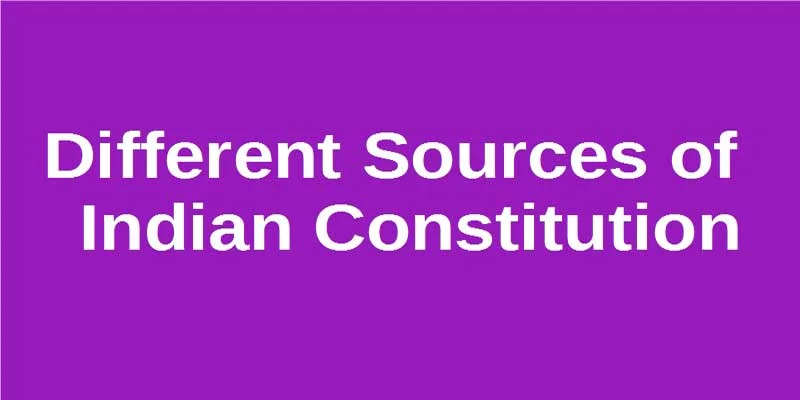Different Sources of the Indian Constitution
Different Sources of Indian Constitution:> The Indian Constitution is a mixture of many constitutions from different countries around the world. However, especially the Government of India Act, 1935, enacted by the British Parliament, is the main source of the Constitution of Independent India.
This constitution determines the composition, functioning, powers, and duties of the government; The basic political ideology of the country has been outlined through the determination of fundamental rights, the directive policies of the state, and the duties of citizens. The constitution of India was adopted by the Constituent Assembly on 26 November 1949 with 274 signatures and this day is known as National Law Day. This constitution came into force on January 26, 1950.
# Various Sources of the Indian Constitution List
| Sources/Countries | List of Borrowed Features |
| Government of India Act 1935 | » Federal structure » Judiciary System » Public Service Commission (PSC) » Emergency Provisions » The office of governor |
| Great Britain | » The parliamentary system of government » Rule of law and law-making system » Concept of single citizenship » bicameral parliament » Speaker of the lower house » Prime minister » President » Strong lower house » Writs |
| Soviet Russia | » Social, Economic, and Political Justice » Five-year plan » Fundamental duties |
| Ireland | » Members nominated by the President in the Rajya Sabha » Presidential Election Procedure » Guidelines for Governance of the State » Directive Principles of State Policy (DPSP) |
| Australia | » Concurrent List » Joint sessions in Upper and Lower houses » Freedom of trade between the states or within the country |
| Canada | » The federal system and the presence of strong centers – also known as a quasi-federal system. » Residuary powers of the Centre » Power distribution between Centre and states governments |
| United State of America (USA) | » Preambles, » Fundamental Rights, » Independence of the Judiciary system, » Removal of Judges of the Supreme Court and High Court, » Vice-President as Chairman of the Rajya Sabha, » Order of the State |
| South Africa | » Procedure for amending the constitution. » Election procedure of the Rajya Sabha members. |
| Germany | » Emergency provision, » Revocation of fundamental rights during an emergency |
| Sweden | » Lokpal Bill |
| Japan | » Rules of procedure of the Supreme Court |
The Indian Council Act of 1892 established the provincial legislature and increased the power of the legislature.
Government of India Act 1935
Although the Government of India Act of 1935 was not fully implemented, the effect of this Act on the Constitution of India was big. Many aspects of the Constitution are adopted directly from this Act.
Is the entire Indian constitution a borrowed trunk?
The Indian Constitution was drafted by the Constituent Assembly over two years, 11 months, and 18 days. Many features are borrowed from the other constitution around the world. Despite this, the essence and spirit of the Indian Constitution are unique. It has been made with consideration of the historical context of national struggles, the country’s geographic diversity, and the characteristics and unique traditions of the people. That isolates it from other countries.
Also, the Constitution of India is the largest written and bulkiest constitution in the world with 448 articles, 22 parts, 12 schedules,s, and 104 amendments. Whereas the constitution of the US and Australia has only 7 and 128 articles respectively. So, It is incorrect to refer to it as a borrowed trunk.
Sources of Indian constitution general knowledge for UPSC, WBCS and other competitive examinations.
